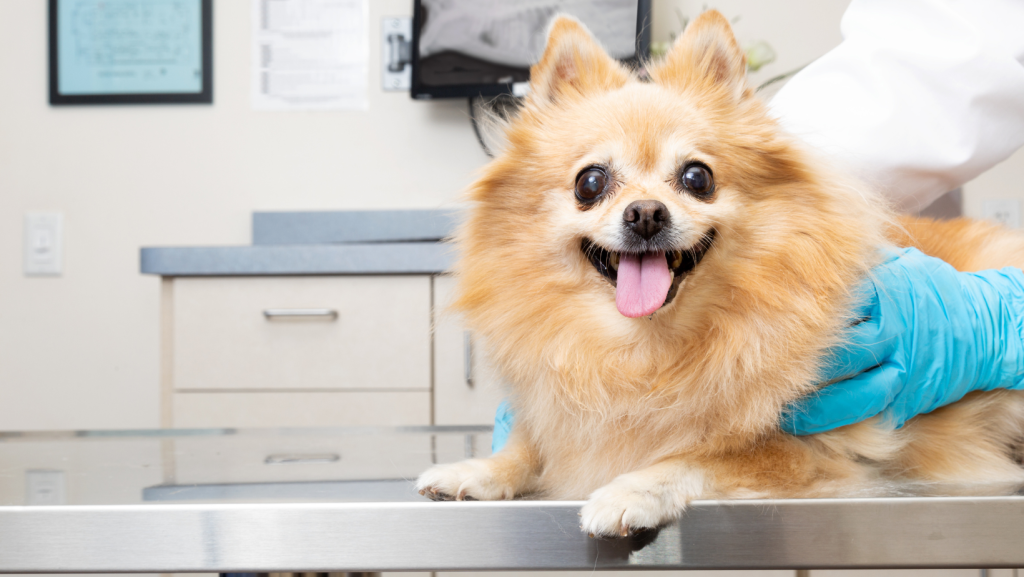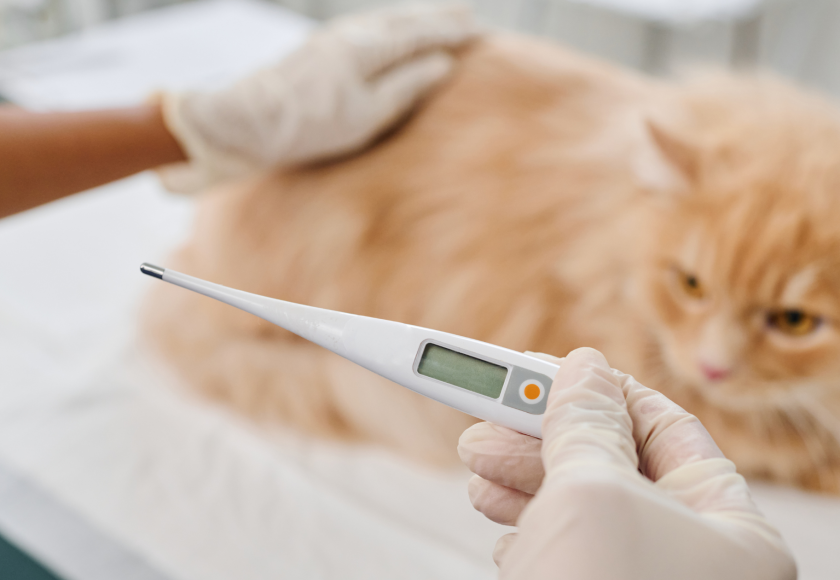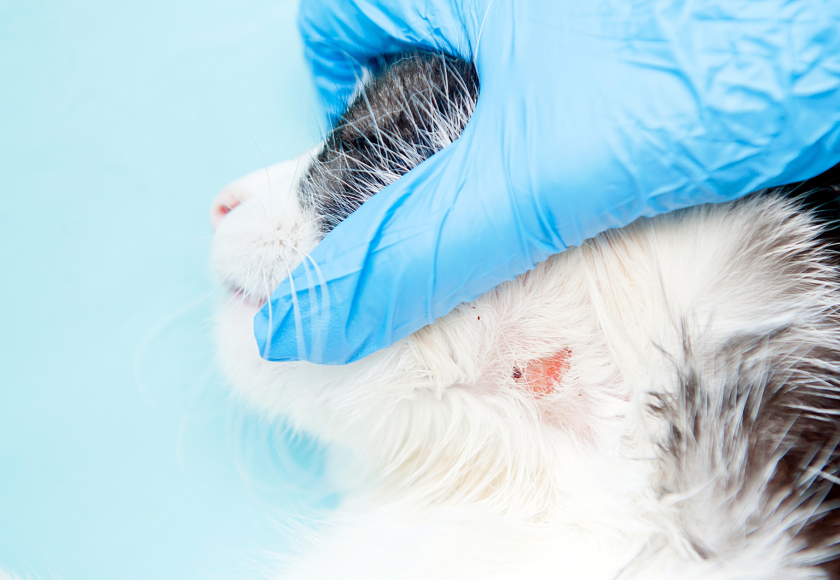Dogs’ eyes can be very sensitive. There are many reasons why a dog’s eyes may become red: some cause inflammation and redness of the skin or conjunctiva around the eye, while others affect the eyeball itself. As always, the best way to find out the answer to the question “why are my dog’s eyes red?” is to talk to a dog eye doctor—a veterinary ophthalmologist—because untreated eye irritation can cause long-term damage.
Table of contents
Allergies
With the arrival of spring and summer, people with allergies will begin to experience the familiar sneezing, itchy eyes, and congestion. And while allergies can occur at any time of year, your four-legged family member may also be more prone to allergies depending on the season.
Modern veterinary medicine has established that hay fever affects dogs and that their bodies mount an immune response to something they have incorrectly identified as harmful, such as pollen in the air. To alleviate the irritating symptoms of dog allergies, such as red eyes, talk to your veterinarian about the best allergy management plan for your pet.
Environmental irritants
There are many potential irritants both inside and outside our homes that can cause redness in a dog’s eyes. Perfumes, cleaning products, sprays, smoke, and even dust can be culprits if they get into your pet’s eyes. So, if you notice that your dog is suffering from red eyes, it is worth considering what possible irritants your four-legged friend may have encountered in their daily adventures.
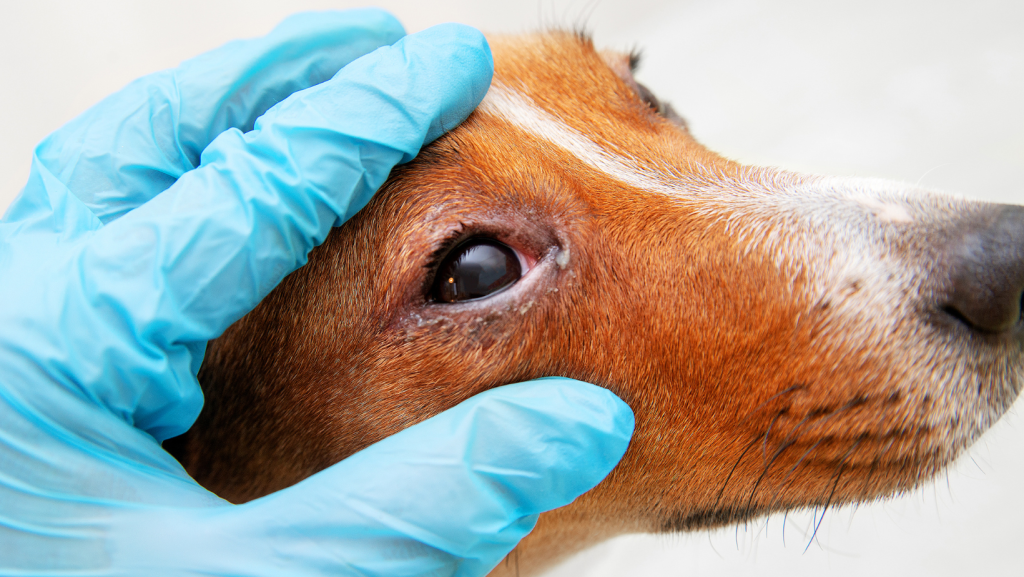
Conjunctivitis
Conjunctivitis is an inflammation of the conjunctiva. Conjunctivitis in dogs can be caused by various types of viral infections, bacteria, fungi, allergens, and chemical reagents. Although conjunctivitis itself is not dangerous to a dog’s health, this inflammation can develop into more serious problems related to the eyes and vision.
This condition occurs when the membrane lining the inside of the eyelids, called the conjunctiva, becomes inflamed and can have many underlying causes, ranging from infectious diseases to allergies or injury.
Depending on what caused your dog’s conjunctivitis, there are many treatments available to help relieve the symptoms.
The first sign of conjunctivitis is redness in the dog’s eyes. Depending on the cause, conjunctivitis in dogs can affect one or both eyes.
Eye injuries
Eye trauma is another possible explanation for why one of your dog’s eyes suddenly became red and swollen. If you have a particularly boisterous puppy, you know how easy it is to get hurt while playing and chasing. If you notice that your pet has squinted or closed its eye during play, or if there are visible injuries to the eye, seek veterinary assistance immediately, especially if you see blood.
If the blow to the eye was particularly strong, the cornea (the surface of the eye) may be damaged, causing painful ulcers to form in the eye itself.
This, in turn, can turn into a scar that obscures vision and can cause many other vision problems, so it is important to seek early professional help from a veterinary ophthalmologist.
Uveitis
Uveitis is an inflammation of the structures of the vascular membrane of the eye. It affects the iris and some other middle layers of the eye. Uveitis is a very painful eye disease, so you may notice that not only are your dog’s eyes red, but your pet is also avoiding bright light or keeping the affected eye closed.

Ragenos opos
The film that covers the front of the eye is called the cornea, and it can sometimes get scratched, especially if you have a dog that likes to run through tall grass, sniff bushes, or bump into things while playing. It is very important to notice and treat corneal damage in time, because a scratched cornea is like an “invitation” for bacteria to penetrate and damage it even more.
Corneal damage causes redness in dogs’ eyes and a lot of discomfort for our beloved four-legged family members.
Glaucoma
Could red eyes in dogs be hiding a more serious condition, such as glaucoma? Although it is more commonly diagnosed in older dogs, any dog can be affected. Cloudy eyes, redness, and discharge from the eyes are some of the most common symptoms that owners should look out for.
Glaucoma is characterized by fluid buildup in the front of the eye, which increases pressure on the optic nerve and causes vision problems. Therefore, it is very important to consult a veterinary ophthalmologist immediately if you notice any changes in your dog’s gaze or redness in the eyes.
Dry eyes
Sometimes a dog’s eyes do not produce enough moisture to properly lubricate the surface. When the tear glands dry out, the cornea also dries out. With reduced eye lubrication, a dog’s reddened eyes will appear to be on fire. The clinical manifestation of dry eyes may be reddened eyes in dogs.
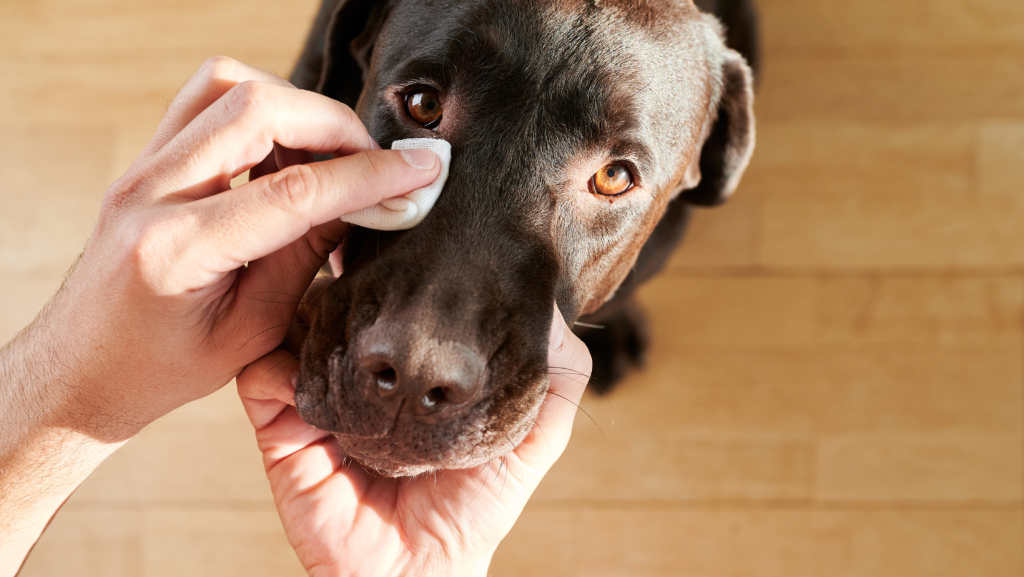
Cherry eye
Cherry eye is a condition that affects the third eyelid gland in dogs. This disease is so named because when the third eyelid gland falls out (protrudes from its normal position), it may appear red and swollen.
Breeds with drooping lower eyelids are more prone to this type of disorder. Unfortunately, a prolapsed third eyelid and its glands must be treated surgically by a veterinary ophthalmologist.
Foreign body in the eye
Red eyes in dogs can signal a foreign object in the eye that has fallen in from the environment. This can be quite common in dogs that are eager for adventure. If your dog likes to walk through bushes and tall grass, something may get into their eyes, causing redness and swelling.
Foreign objects that get into your dog’s eyes can be as small as a grass seed or as large as a piece of twig. While it is impossible to reduce the risk to zero, try to avoid long grass and be sure to check your pet from head to toe after a walk to catch any problems early.
Where to go if your dog has eye problems?
The specialists working at the Begemotas Veterinary Clinic and the innovative and modern equipment allow us to determine the causes of red eyes as quickly as possible, and once an accurate diagnosis has been made, the veterinary ophthalmologist can prescribe the most appropriate treatment method.
The Begemotas Veterinary Medical Center is a place where not only the health of each four-legged patient is cared for, but also the emotional state of the patient and their owner. Located in the central part of Vilnius, in Paupys, the veterinary clinic offers a wide range of services, and for the specialists working at the clinic, veterinary medicine is a calling. If you suspect that your pet is unwell, contact us today.
